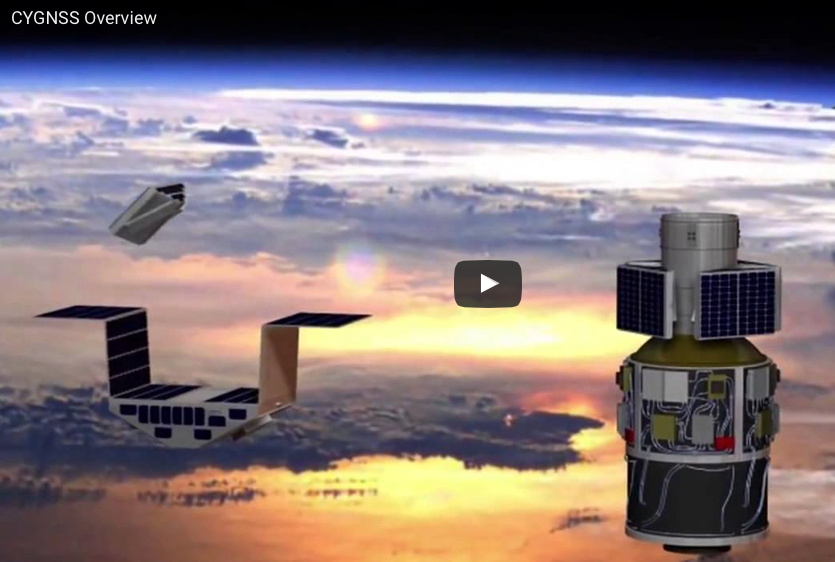
CYGNSS is launched December 15 from Cape Canaveral Air Force Station in Florida aboard a Pegasus XL rocket from an Orbital Sciences Corporation Stargazer L-1011 aircraft. Solar array panels are Sierra Nevada Corporation's. Credits: University of Michigan

Better hurricane forecasting just got even better as the new revolutionary satellite constellation aimed at improved hurricane forecasting, Cyclone Global Navigation Satellite System (CYGNSS), successfully reached orbit with technology and components made by Sierra Nevada Corporation (SNC). The small satellites are about five feet long each and are expected to be in orbit for a couple of years. They were launched out of Cape Canaveral, Florida earlier today.
While Sierra Nevada Corporation already has built and launched solar arrays on more than a dozen of their own satellites, this marks a first with the commercial sale of SNC solar arrays to another company, and the first time one of its launch adapters deployed an entire small satellite constellation.
The satellites, developed by Southwest Research Institute (SwRI) for NASA, will look at the tropics, gather data on wind speeds hovering above the ocean and eventually help track and report intensity of hurricanes to develop more precise extreme weather predictions. CYGNSS is NASA’s first small satellite system devoted to this kind of air-sea storm interaction. The satellites were carried into orbit on a single launch vehicle and will receive both direct and reflected signals via Global Positioning System (GPS) satellites.
Bryan Helgesen, director of strategy and business development for Space Technologies in SNC’s Space Systems business area said, “We are thrilled to be a part of a project that helps gain better hurricane data that can eventually help keep a lot of people safe, but from a business side, we are also glad we could help SwRI achieve their mission requirements with better performance and lower cost and risk.”
Sierra Nevada Corporation provided the deployable solar array assemblies for each of the eight satellites, as well as the satellite constellation deployment module system. The deployed solar arrays harness energy from the sun used to power each satellite.
The deployment module is a custom-designed launch adapter that interfaces with the Pegasus-XL launch vehicle. The eight satellites are attached to the deployment module during launch, and then the satellites are released in pairs into their proper orbit. SNC’s heritage, fast-acting and low-shock Hold Down and Release Mechanism (HDRM) product allows for paired sets of satellites to be deployed simultaneously in an extremely soft and clean manner, in contrast to traditional pyrotechnic separation devices that create significant debris and generate high-shock loading into the spacecraft.
The Space Physics Research Laboratory at the University of Michigan College of Engineering leads the overall mission execution, and its Climate and Space Sciences and Engineering Department leads the science investigation. Dr. Chris Ruf of the University of Michigan serves as CYGNSS principal investigator. The Earth Science Division of NASA’s Science Mission Directorate oversees the mission.

